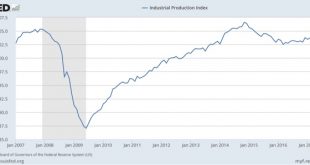Yves Smith notes on the Boston rally this Saturday: Thanks to a huge and well-organized police presence, as well as strict limits imposed on the participants, follow-up to the “Unite the Right” white supremacist event in Charlottesville, the “Boston Free Speech” rally on Saturday demonstrated that the community wasn’t about to cut extreme right wing agitators much slack: “We probably had 40,000 people out here standing tall against hatred and bigotry in...
Read More »Interactive timeline
Plan the time to take a deep breath and look at Steven Harper’s Interactive Timeline: Everything We Know About Russia and President Trump at Moyers and Company. When it comes to Donald Trump, his campaign and their dealings with Russia past and present, sometimes it’s hard to keep track of all the players without a scorecard. We have one of sorts — a deeply comprehensive timeline detailing what actually happened and what’s still happening in the...
Read More »The United Nations Peddling Racism and Sexism
The United Nations peddles garden variety sexism and racism disguised as data. Case in point is the the 2014 United Nations Global Homicide Book. Figure 1.3 and Map 1.2 (which promote racism), or Figure 5.6 (which perpetuates sexist notions) are particularly problematic. I for one refudiate the report.
Read More »Evolution of the Trump Administration: An Op Ed
Donald Trump seems to be missing some sort of a regulator that prevents him from simply saying what temporarily happens to be on his mind. That made it inevitable that he would treat his audience to a regular stream of faux pas. However, I think both the degree and severity of the mess may be diminished going forward. The reason has to do with how the Trump administration came into being. Simply put, unlike most candidates, he actually beat both major...
Read More »What Would Jesus Do?
First they coddled the white supremacists with false equivalency, and I didn’t resign from the Trump Evangelical Council because those protesting the white supremacists didn’t have a permit…
Read More »Open thread Aug. 18, 2017
Slavery, “Heritage” and Southern Fried “Free Speech”
Who knew that neo-Nazi, KKK white supremacists and Trump supporters were liars, cry-babies AND hypocrites? The reasons for secession by the states of the Confederacy were not complex or ambiguous. They are not a mystery. They were proudly proclaimed by the Confederate states. The cornerstone of the Confederacy was slavery and the conviction of the racial superiority of the White man and the social, moral and political inferiority of Africans. This was...
Read More »Symbols of Oppression Being Ignored
The Confederacy stood for the forcible subjugation of other people. If there is a benefit to honoring the concept of or symbols for the Confederacy I don’t see it. Taking these symbols out of the public sphere is a net positive, even if some people are able to simultaneously a) disassociate those symbols from the oppression they represent and b) venerate those symbols. To be consistent, note that the radical Islamic ideology also calls for the...
Read More »Impeach Trump?
Industrial production: once again, the hard data fails to confirm the sof … ofertheluvofgaud
by New Deal Democrat Industrial production: once again, the hard data fails to confirm the sof … ofertheluvofgaud This morning’s report on industrial production confirms that the economy remains on autopilot, and that’s a good thing. Overall production increased again, and the trend of rising production since spring of last year is clear: When we break it down by manufacturing (blue, left scale), mining, and utilities (red and green, right scale), we get...
Read More » The Angry Bear
The Angry Bear




